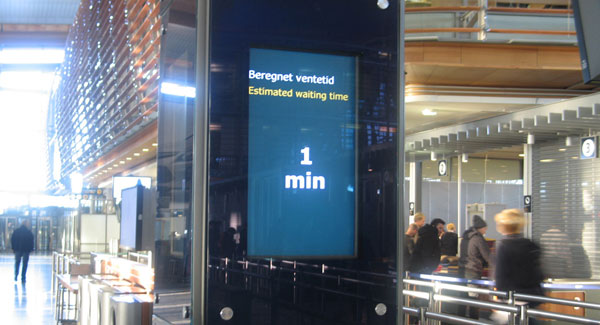
The benefits of Bluetooth-based passenger tracking are two-fold. Firstly, it allows for the airport to address bottlenecks and reduce queuing times, and secondly, it provides for a more seamless journey for the passenger and, in turn, an enhanced airport experience.
Ranging from Europe to North America, the uptake of Bluetooth-based technology for passenger tracking is swiftly advancing and the latest implementation of the technology is due to take place at Helsinki-Vantaa Airport. The Finnish airport will start the implementation of Amor Group’s PAXPath+ solution in mid-April, and it is expected to become fully operational in June.
“Security control is a process that everyone has to go through and there are very strict rules for the actual checking procedure as we all know,” explained Finavia’s Head of Passengers & Airlines, Pirjo Lähteelä. “We have streamlined the service within the limits of the EU regulation but also want to improve the passenger experience. In our experience, the passengers do understand the need for the security controls, but what they do need is information on the duration of the process and that is what we hope to achieve.”
Real-time queue management
The Bluetooth-based system has already been introduced in, among other airports, London Heathrow, Oslo and Copenhagen, and will soon be introduced in Toronto Pearson. Passengers are passively tracked using their Bluetooth-enabled mobile devices, real-time queuing information is then generated, and accurate queuing times are displayed on the flight information display screens (FIDS).
Alaistair Deacon, Transport Solutions Director, Amor Group, explained: “Airports can gain an insight into what’s happening in real-time at security search and at any other area in the terminal where there is a queue. Bluetooth offers complete journey management. The signal that is received at the front door is the same as the signal that is received at security, immigration and at the gate. You can essentially measure the complete passenger journey from the car park to the gate.”
While Bluetooth-based passenger tracking allows the airport to address bottlenecks, tactically deploy resources based on real-time data, and compile historical data from the results, Deacon added that the “passenger benefits from getting an improved level of service”.
He continued: “The feedback from the airports that are using Bluetooth tracking is that efficiency has gone up and the consistency of the service has been improved. Displaying the accurate waiting times also has a positive impact on the passengers’ perception.”
Elsewhere, SITA has also recently partnered with Bluelon to provide Bluetooth-based passenger tracking through the iQueue Bluetooth tracking solution, which has already been installed in major hubs, such as Frankfurt Airport.
In addition to the existing system – which extends to passenger tracking via a bar-coded boarding pass (BCBP) – Kevin Peterson, Senior Product Manager at SITA, explained that passengers could one day be able to “opt-in” to Bluetooth tracking for added value.
He said: “SITA is looking at developing the capability for airlines to query where “opted-in” passengers are within the airport. If an airline is about to close out a flight and they are missing three passengers (two of whom happen to have opted-in), the airline could bring up a map of the terminal and have the two passengers’ locations highlighted on the map, in real-time (with Bluetooth) or where they were seen last (via BCBP), along with an estimate of their time to the gate.
“If one of the passengers was still in the retail area or the wrong gate area, then the airline could send a message, or call the passenger, informing them that they have five minutes to get to the gate.”
Bluetooth vs RFID
While Radio Frequency Identification (RFID) technology could offer an alternative to Bluetooth tracking, due to the narrow scope of its adoption to date, this would accrue additional costs for the airport and would require more active – and therefore more disruptive – participation from the passenger.
Amor Group’s Deacon explained: “Bluetooth has gone past being an emerging technology and is now a mature technology and it is something that we are now deploying fairly rapidly. It’s important that airports continue to strive to improve passenger processing and how well they are serving passengers because it will improve both efficiency and the passenger experience.”







